Publications
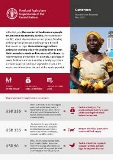
Cameroon: Humanitarian Response Plan 2023
04/2023
In the last year, the number of food insecure people in Cameroon has risen by 800 000. Intercommunity conflict, attacks by non-state armed groups, flooding and rising food prices are pushing people beyond their means to cope.

Haiti: Response overview, April 2023
04/2023
According to the latest Integrated Food Security Phase Classification (IPC) analysis, nearly half of the population in Haiti is in high acute food insecurity (March–June 2023) – an increase compared with 4.7 million people projected in the September 2022 analysis.
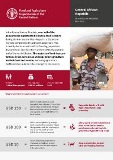
Central African Republic: Humanitarian Response Plan 2023
04/2023
In the Central African Republic, over half of the population is expected to be acutely food insecure during the lean season (May–August) – a 27-percent increase compared with last year’s projection.

Step 1: Disaster risk prioritization - Guidance note series on Anticipatory Action
04/2023
This publication is part of a series of four core guidance notes providing direction on how to identify and prioritize risks (Step 1 – disaster risk prioritization), and accordingly establish an early warning system for Anticipatory Action (Step 2 – early warning systems), design and implement Anticipatory Action programmes (Step 3 – Anticipatory Action programming), and finally assess the impact of such programmes (Step 4 – impact analysis).
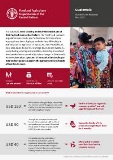
Guatemala: Humanitarian Response Plan 2023
04/2023
In Guatemala, food security and nutrition needs are at their highest in recorded history.
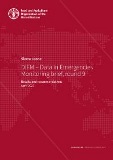
Sierra Leone: DIEM – Data in Emergencies Monitoring brief, round 9
04/2023
This Data in Emergencies Monitoring (DIEM-Monitoring) brief shares the results of a ninth-round assessment conducted between February and March 2023 in Sierra Leone.
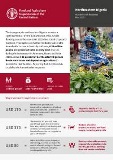
Northeastern Nigeria: Humanitarian Response Plan 2023
04/2023
The insurgency in northeastern Nigeria remains a significant driver of the humanitarian crisis. Severe flooding across the country in 2022 devastated crops and livestock.
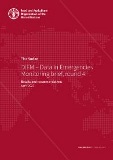
The Sudan: DIEM – Data in Emergencies Monitoring brief, round 4
04/2023
This Data in Emergencies Monitoring (DIEM-Monitoring) brief shares the results of a fourth-round assessment conducted in January 2023 in the Sudan.
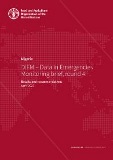
Nigeria: DIEM – Data in Emergencies Monitoring brief, round 4
04/2023
This Data in Emergencies Monitoring (DIEM-Monitoring) brief shares the results of a fourth-round assessment conducted between February and March 2023 in Nigeria.

Haiti: DIEM – Data in Emergencies Monitoring brief, round 3
04/2023
This Data in Emergencies Monitoring (DIEM-Monitoring) brief shares the results of a third-round assessment conducted between November and December 2022 in Haiti.
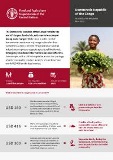
Democratic Republic of the Congo: Humanitarian Response Plan 2023
04/2023
The Democratic Republic of the Congo remains the world’s largest food crisis, with one in four people facing acute hunger.
.tmb-th600x450.jpg?Culture=fr&sfvrsn=4af57e01_1)
Mali: Humanitarian Response Plan 2023
04/2023
Mali faces a severe humanitarian crisis driven by years of armed conflict, climatic hazards and high staple food prices.

Special Fund for Emergency and Rehabilitation Activities (SFERA) – Annual report 2022
04/2023
The Special Fund for Emergency and Rehabilitation Activities (SFERA) enables the Food and Agriculture Organization of the United Nations (FAO) to take rapid and effective action in response to food and agricultural threats and emergencies.

The Sudan: Humanitarian Response Plan 2023
04/2023
Food insecurity remains significantly high in the Sudan, driven by increased and prolonged instability and displacement, economic deterioration and high food prices.

Türkiye and the Syrian Arab Republic: Contributions to the Special Fund for Emergency and Rehabilitation Activities (SFERA) from Belgium, Norway and Sweden
03/2023
The earthquakes that struck southern Türkiye and the northern part of the Syrian Arab Republic on 6 February 2023 caused immense damages and losses, particularly in the countries’ rural areas.
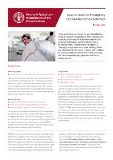
Special Fund for Emergency and Rehabilitation Activities: Briefing note
03/2023
The Special Fund for Emergency and Rehabilitation Activities (SFERA), established in 2004, enhances the capacity of the Food and Agriculture Organization of the United Nations (FAO) to respond rapidly to food security and agricultural emergencies.

Towards durable solutions: Sustainable reintegration of the forcibly displaced
03/2023
This brochure provides an overview of FAO’s approach to supporting the sustainable reintegration of the forcibly displaced.
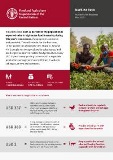
Burkina Faso: Humanitarian Response Plan 2023
03/2023
In Burkina Faso, over 16 percent of the population is expected to be in high acute food insecurity during this year’s lean season, if appropriate assistance isn’t provided.
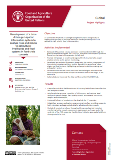
Global: Project Highlights - OSRO/GLO/110/USA
03/2023
The Government of the United States of America contributed USD 6 202 542 to the FAO project entitled “Development of a data-driven geo-spatial information system to analyse risks and shocks to agricultural livelihoods and food systems in food crisis contexts”.

Chad: DIEM – Data in Emergencies Monitoring brief, round 4
03/2023
This Data in Emergencies Monitoring (DIEM-Monitoring) brief shares the results of a fourth-round assessment conducted between December 2022 and January 2023 in Chad.
